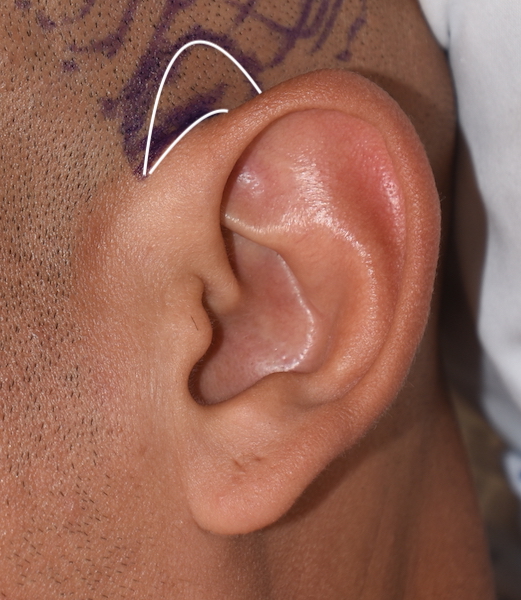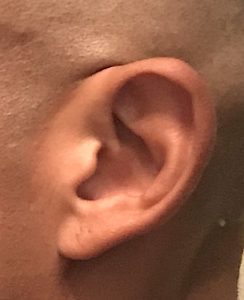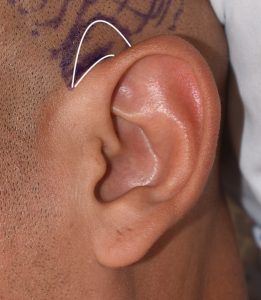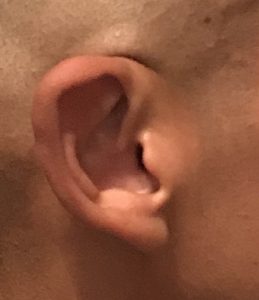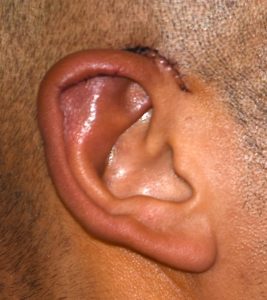Background: The scalp is essentially soft tissues stretch over a ‘beachball’. (skull) Because of its stretched out shape it is typically fairly tight. While everyone has some scalp laxity it is not particularly flexible or can be pushed around much. There are certain scalp circumstances, however, where greater scalp looseness occurs. One such circumstance is when one’s skin pigment is darker. Unknown to many the darker your skin pigment is the thicker the scalp is which gives it greater flexibility. Another circumstance is after large amounts of weight loss. Even the scalp gets thicker in weight gain and extreme amounts of weight loss will cause the scalp to sag a bit much like that in the face or neck.
Another very unique condition which often creates scalp laxity is the often unrecognized condition known as CVG. (cutis vertices gyrata) In this scalp pathology, usually only recognizable in balding/bald/shaved head males longitudinal grooves of the scalp of variable depths occur. Its origin is yet unknown. But besides the non-smooth surface contour the surrounding scalp beyond the grooves is often more mobile. The grooves themselves are often somewhat fixed if they are deep enough but the scalp outside the groove can be much more mobile.
With excessive scalp tissue or mobility, the scalp can develop an overhang on the top of the ears. This is seen as as roll of skin at the superior helical root of the ear. (meaning then rolls is in the groove between the top of the ear and the scalp) In some cases it may extend down further along the back of the ear but the most visible part is at the top of the ear. This disrupts the normally smooth linear shape of the scalp as it comes down into the ear fold.
Case Study: This short-haired male was undergoing multiple skull reshaping procedures in which he also requested the annoying roll of scalp on he top of his ear be removed.
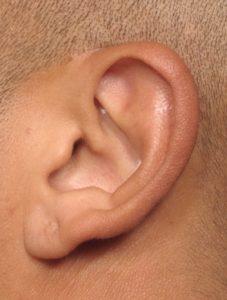
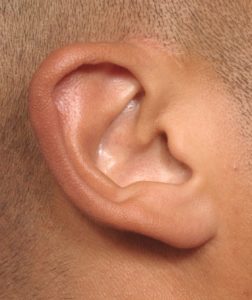
In both cases the scar lines healed beautifully and the scalp roll was completely eliminated.
Just the face redundant skin of the scalp can be removed. But invisible scar placement is restricted to the sulcus of the ear. Like a very limited mini-facelift or small jowl tuck up this can also be done as well at the top of the ear for the aesthetically bothersome scalp roll. (reverse ear tuck if you will) `
Case Highlights:
1) Scalp redundancies or excessive scalp laxity can create an undesired roll of scalp across the top of the ear.
2) Excision of the scalp roll in the V-shaped between the top of the upper ear and the scalp can be done by an ‘ear tuck’, placing the scar line in the auricular sulcus.
3) With the upper ear tuck (scalp roll excision) the scar heals in an inconspicuous manner even in the more exposed superior helical root area.
Dr. Barry Eppley
Indianapolis, Indiana

